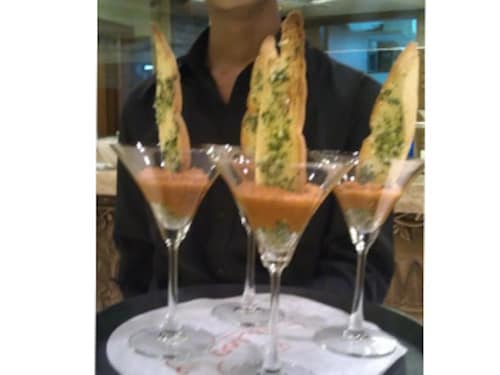"Talk Salad, Eat Samosa"
Indians like to show off their knowledge of world cuisine but when it comes to personal choice, it's the local stuff that gets their taste buds tingling


If a chef comes, can talk of food be far behind? A little while back, I was at a tony little dinner after an art show in Mumbai. One of the guests was celebrity chef Sanjeev Kapoor. It was hard not to hear the food related conversation that people were having with him, about the easy availability of Japanese seaweed and their recipe for couscous salad and the great quality of herbs at organic food stores. Sanjeev listened with an absorbed look of concentration, and then whispered to me with amusement, ‘sab salad aur dressing ki baat kartey hain, par samosa chutney khaate hain” (everyone here talks of salad and dressings but loves their samosa chutney)!Master Chef Sanjeev Kapoor of course didn’t mean what he said literally. Burmese khowsuey, Japanese tempuras, Lebanese baba ganoush are regular offerings at parties in upmarket homes. Five years ago one would have had to do a Wikipedia search to find out what Quinoa and Amaranth meant. Today, any health food fan knows what they are. Sushi kits are hot sellers at exclusive food stores like Foodhall and Nature’s Basket. Yes, global food is truly growing and becoming interesting in India. It is an important marker, a badge of sophistication for people who are climbing up the well-being ladder. You “need to know” how to say ‘guacamole’ without an accent and “need to have” avocados and asparagus in your refrigerator, if you want to signal arrival to yourself, and others around you. And yet, Indians want their samosas and parathas while also seeking modernity, sophistication, premiumisation of what they eat and offer. From that point of view, the Indian palate wrapped up in modernity is a recipe for magic, a much bigger magic. There are many more consumers for an exotic samosa than there are for guacamole, and that is going to remain the case for the foreseeable future. Most local canny vendors of food have already understood this. The other day, I went to buy dhokla from a popular snack shop in the neighbourhood. “Sir, which dhokla?” was the question tossed at me by the counter girl, who then offered me a taste of the amazing range. .. cheese dhokla, sandwich dhokla, tiranga, schezwan, crisp and of course, the original khaman dhokla. The most popular varieties were cheese and tiranga! All the fancy new variants were priced 30 percent above the good old khaman; nobody cared about the price. At a recent banquet, I was served traditional Konkani sol kadi in shot glasses. The starters included pav bhaji in martini glasses with a slice of crusty flatbread.
First Published: Jun 30, 2012, 08:53
Subscribe Now